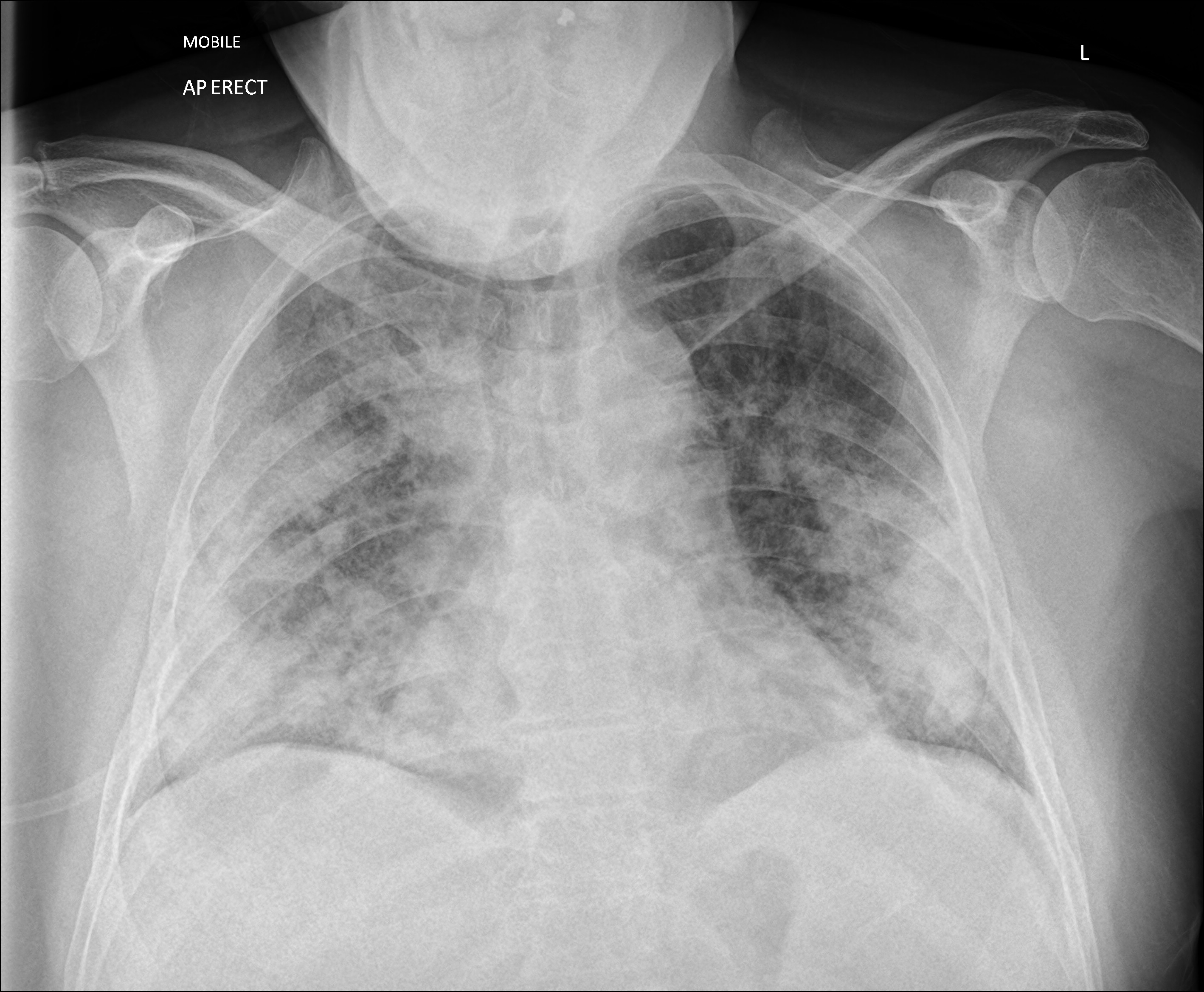COVID-19 x ray
For COVID-19 frequently asked inpatient questions, click here
For COVID-19 frequently asked outpatient questions, click here
|
COVID-19 Microchapters |
|
Diagnosis |
|---|
|
Treatment |
|
Case Studies |
|
COVID-19 x ray On the Web |
|
American Roentgen Ray Society Images of COVID-19 x ray |
Editor-In-Chief: C. Michael Gibson, M.S., M.D. [1]; Associate Editor(s)-in-Chief: Aditya Ganti M.B.B.S. [2]
Overview
An x-ray may be helpful in the diagnosis of COVID-19 infection. Findings of chest x-ray can be consistent with the disease severity and time of presentation. Chest X-ray findings of COVID-19 may be normal in early/mild disease. Findings are most extensive about 10-12 days after symptom onset. The most frequent findings are consolidation. The distribution is most often bilateral, peripheral, and lower zone predominant. In contrast to parenchymal disease, pleural effusion is rare.
X Ray
- An x-ray may be helpful in the diagnosis of COVID-19 infection.[1][2]
- Findings of chest x-ray can be consistent with the disease severity and time of presentation.
- Chest X-ray findings of Covid-19 may be normal in early/mild disease.
- Findings are most extensive about 10-12 days after symptom onset.
- Findings on X-ray in severe COVID-19 infection include:
- Airspace opacities (consolidation)
- Often bilateral, peripheral, and lower zone predominant.
- Airspace opacities (consolidation)
- Pleural effusions are rare.
- Table below provides information on the percentage of various x-ray findings in 636 patients with Covid-19 from Greater NYC UC Centers.
| Radiologic Pattern | Categories | % of individuals |
|---|---|---|
| Severity | Normal | 58.3 |
| Mild | 30.7 | |
| Moderate | 10.2 | |
| Severe | 0.8 | |
| Type of Infiltrate | Interstitial | 23.7 |
| Ground glass opacities | 18.9 | |
| Consolidation | 5.3 | |
| Location | Lower | 33.8 |
| Upper | 20.1 | |
| Diffuse | 0.9 | |
| Number of Lesions | One | 24.2 |
| Multiple | 11.2 | |
| Location of lesions | Central | 7.1 |
| Peripheral | 35.4 | |
| Other findings | Lymphadenopathy | 0.3 |
| Effusion | 0.3 |
| The above table adopted from JUCM The Journal of Urgent Care Medicine [3] |
|---|
Image


References
- ↑ Weinstock MB, Echenique A, Russell JW, et al. Chest x-ray findings in 636 ambulatory patients with COVID-19 presenting to an urgent care center: a normal chest x-ray is no guarantee. J Urgent Care Med. April 13, 2020. [Epub ahead of print])
- ↑ Yoon, Soon Ho; Lee, Kyung Hee; Kim, Jin Yong; Lee, Young Kyung; Ko, Hongseok; Kim, Ki Hwan; Park, Chang Min; Kim, Yun-Hyeon (2020). "Chest Radiographic and CT Findings of the 2019 Novel Coronavirus Disease (COVID-19): Analysis of Nine Patients Treated in Korea". Korean Journal of Radiology. 21 (4): 494. doi:10.3348/kjr.2020.0132. ISSN 1229-6929.
- ↑ Weinstock MB, Echenique A, Russell JW, et al. Chest x-ray findings in 636 ambulatory patients with COVID-19 presenting to an urgent care center: a normal chest x-ray is no guarantee. J Urgent Care Med. April 13, 2020. [Epub ahead of print])
- ↑ Case courtesy of Dr Subhan Iqbal, Radiopaedia.org, rID: 76341
- ↑ Case courtesy of Dr Ian Bickle, Radiopaedia.org, rID: 75844